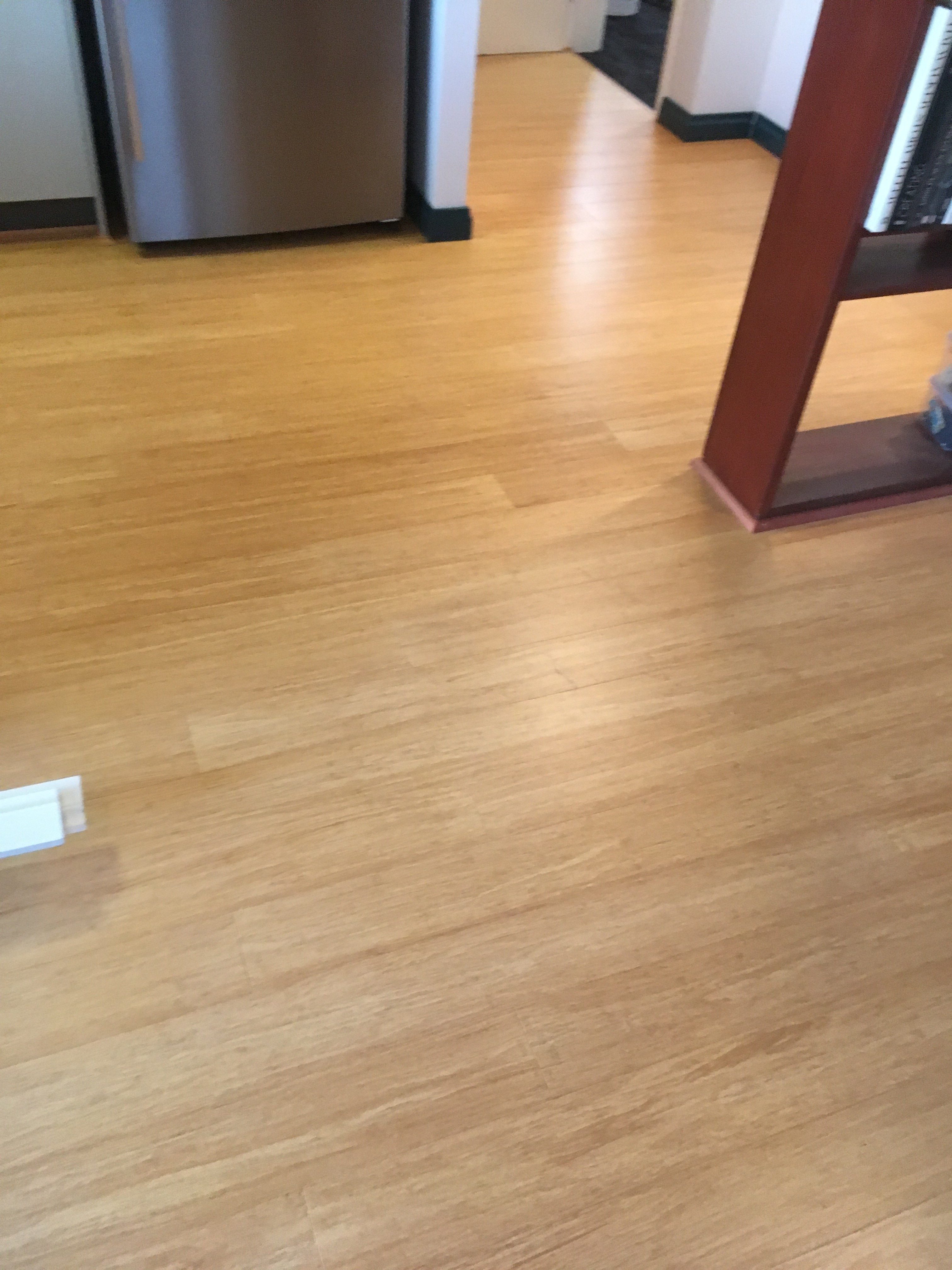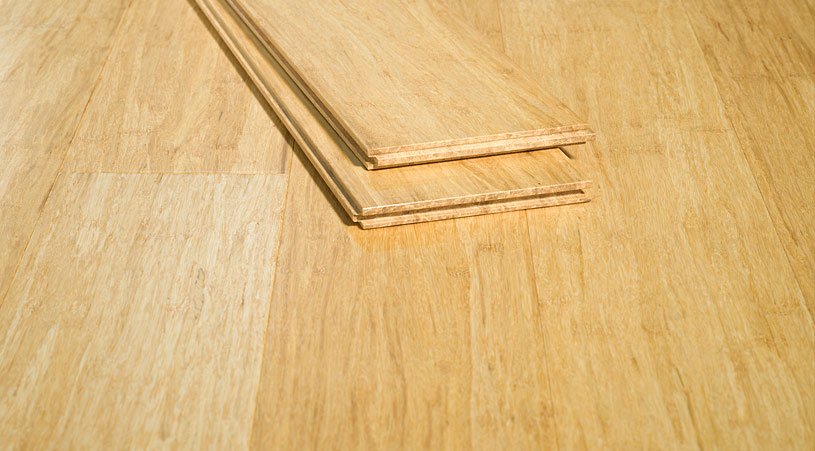Understanding Click Lock Bamboo Flooring
Click lock bamboo flooring is a popular choice among homeowners due to its durability, eco-friendliness, and ease of installation. Let’s discuss the features, characteristics, and types of click lock bamboo flooring, providing you with essential information to help you make an informed decision for your home renovation or construction project.
- What is Click Lock Bamboo Flooring?: Click lock bamboo flooring is a type of engineered bamboo flooring that features a locking mechanism for easy installation. Unlike traditional bamboo flooring, which requires adhesive or nails for installation, click lock bamboo flooring is designed to “click” together, creating a seamless and secure connection between planks. This innovative locking system allows for quick and hassle-free installation without the need for specialized tools or professional assistance.
- Characteristics of Click Lock Bamboo Flooring: Click lock bamboo flooring shares many of the same characteristics as traditional bamboo flooring, including durability, sustainability, and aesthetic appeal. Bamboo is a highly renewable and eco-friendly material that grows rapidly and regenerates quickly, making it an environmentally responsible choice for flooring. Click lock bamboo flooring is available in a variety of colors, finishes, and grain patterns to suit any design preference, from modern and contemporary to rustic and traditional.
- Types of Click Lock Bamboo Flooring: Click lock bamboo flooring is available in two main types: solid strand woven bamboo and engineered bamboo. Solid strand woven bamboo is made by compressing shredded bamboo fibers with resin and then subjecting them to high pressure and heat, resulting in a dense and durable flooring material. Engineered bamboo, on the other hand, consists of a bamboo veneer layer adhered to a plywood or fiberboard core, providing added stability and resistance to moisture.
- Installation Considerations: Before installing click lock bamboo flooring, it’s essential to prepare the subfloor properly to ensure a smooth and even surface. The subfloor should be clean, dry, and level, with any imperfections or irregularities addressed before installation. Additionally, acclimate the flooring planks to the room temperature and humidity for at least 48 hours prior to installation to prevent warping or buckling. Click lock bamboo flooring can be installed over a variety of subfloor materials, including concrete, plywood, and existing flooring, making it a versatile option for any room in your home.
- Cost and Maintenance: Click lock bamboo flooring is generally more affordable than solid hardwood flooring, making it a cost-effective choice for budget-conscious homeowners. Additionally, click lock bamboo flooring requires minimal maintenance to keep it looking its best. Routine sweeping or vacuuming to remove dirt and debris, along with occasional mopping with a damp cloth or mop, is usually sufficient to maintain the beauty and durability of click lock bamboo flooring. Avoid using harsh chemicals or abrasive cleaners, as these can damage the finish of the flooring.
- Durability and Longevity: Click lock bamboo flooring is known for its durability and longevity, thanks to the natural strength and resilience of bamboo. Bamboo is harder and more durable than many traditional hardwoods, making it resistant to scratches, dents, and wear. Additionally, click lock bamboo flooring is less prone to moisture damage and warping compared to solid hardwood flooring, making it suitable for use in areas with high humidity or moisture levels, such as kitchens and bathrooms.

Advantages of Installing Click Lock Bamboo Flooring
Click lock bamboo flooring offers numerous advantages over traditional hardwood flooring, making it an attractive choice for homeowners seeking durability, sustainability, and ease of installation. Below are some key advantages of installing click lock bamboo flooring in your home, highlighting why it’s a smart investment for both practical and aesthetic reasons.
Ease of Installation: One of the primary advantages of click lock bamboo flooring is its ease of installation. Unlike traditional hardwood flooring, which requires adhesive, nails, or specialized tools for installation, click lock bamboo flooring features a user-friendly locking mechanism that allows for quick and hassle-free installation. The planks simply “click” together, creating a tight and secure bond without the need for glue or fasteners. This makes click lock bamboo flooring an ideal choice for DIY enthusiasts or homeowners looking to save time and money on installation costs.
Durability and Resilience: Click lock bamboo flooring is known for its durability and resilience, thanks to the natural strength and hardness of bamboo. Bamboo is harder and more durable than many traditional hardwoods, making it resistant to scratches, dents, and wear. Additionally, click lock bamboo flooring is less prone to moisture damage and warping compared to solid hardwood flooring, making it suitable for use in high-traffic areas such as kitchens, bathrooms, and entryways.
Sustainability: Bamboo is a highly renewable and eco-friendly material that grows rapidly and regenerates quickly, making click lock bamboo flooring a sustainable choice for environmentally conscious homeowners. Unlike traditional hardwoods, which can take decades to mature and are often harvested unsustainably, bamboo reaches maturity in just a few years and can be harvested without harming the plant or its surrounding ecosystem. By choosing click lock bamboo flooring, homeowners can reduce their environmental footprint and contribute to a more sustainable future.
Variety of Styles and Finishes: Click lock bamboo flooring is available in a wide range of styles, colors, and finishes to suit any design preference or aesthetic taste. Whether you prefer a classic, natural bamboo look or a more modern and contemporary finish, there’s a click lock bamboo flooring option to complement your interior décor scheme. From light, honey-toned hues to rich, dark shades, click lock bamboo flooring offers endless possibilities for creative expression and customization.
Cost-Effectiveness: Click lock bamboo flooring is generally more affordable than traditional hardwood flooring, making it a cost-effective choice for budget-conscious homeowners. In addition to its lower initial cost, click lock bamboo flooring requires minimal maintenance to keep it looking its best, saving homeowners time and money on cleaning and upkeep. With its long-lasting durability and timeless appeal, click lock bamboo flooring offers excellent value for money and a high return on investment.
Health Benefits: Click lock bamboo flooring is hypoallergenic and non-toxic, making it a healthy choice for indoor environments. Unlike carpeting, which can trap dust, allergens, and pet dander, click lock bamboo flooring is easy to clean and does not harbor allergens or pollutants. Additionally, bamboo has natural antimicrobial properties that inhibit the growth of bacteria and mold, promoting a cleaner and healthier living environment for you and your family.
Step-by-Step Installation Guide for Click Lock Bamboo Flooring
Installing click lock bamboo flooring is a straightforward process that can be completed in just a few simple steps. Below we provide you with a step-by-step installation guide for click lock bamboo flooring, helping you achieve professional-looking results with ease.
Prepare the Subfloor: Before installing click lock bamboo flooring, it’s essential to prepare the subfloor properly to ensure a smooth and even surface. Remove any existing flooring materials, such as carpet, tile, or hardwood, and clean the subfloor thoroughly to remove dirt, dust, and debris. Repair any cracks or imperfections in the subfloor, and ensure that it is dry, level, and free of moisture before proceeding with installation.
Acclimate the Flooring: Acclimate the click lock bamboo flooring planks to the room temperature and humidity for at least 48 hours prior to installation. This allows the planks to adjust to the environmental conditions of the room and reduces the risk of warping or buckling after installation. Stack the flooring planks horizontally in the room where they will be installed, with spacers between each plank to allow for proper air circulation.
Prepare the Layout: Plan the layout of the click lock bamboo flooring carefully to ensure a visually appealing and symmetrical installation. Start by dry-fitting the planks in the desired pattern, taking into account the size and shape of the room, as well as any architectural features or furniture placement. Use a pencil to mark any adjustments or cuts that may be necessary to achieve a seamless and professional-looking installation.
Install the Underlayment: Lay down an underlayment material, such as foam or cork, to provide cushioning and sound insulation for the click lock bamboo flooring. Roll out the underlayment across the entire surface of the subfloor, overlapping the seams by a few inches and securing them with tape. Trim any excess underlayment around the edges of the room using a utility knife.
Begin Installation: Start the installation process in a corner of the room, working from left to right. Begin by laying the first row of click lock bamboo flooring planks, positioning them with the tongue side facing the wall. Use spacers between the planks and the wall to maintain the expansion gap required for proper installation.
Click the Planks Together: Click the planks together by aligning the tongue of each plank with the groove of the adjacent plank at a slight angle, then pressing down firmly to lock them into place. Use a tapping block and hammer to gently tap the planks together along the long edges, ensuring a tight and secure fit. Continue installing the first row of planks until you reach the end of the row, then measure and cut the last plank to fit using a saw.
Continue Installation: Once the first row is complete, begin installing the second row of planks, ensuring that the end joints are staggered for a more stable and visually appealing installation. Click the planks together in the same manner as the first row, using a tapping block and hammer to ensure a tight fit. Continue installing subsequent rows of planks, alternating the staggered joints and maintaining the expansion gap along the perimeter of the room.
Complete the Installation: Continue installing click lock bamboo flooring planks row by row until the entire floor surface is covered. Use a pull bar and hammer to secure the final row of planks in place, ensuring a tight fit against the wall. Trim any excess underlayment and spacers, and install transition strips or moldings as needed to cover expansion gaps and create a finished look.
Inspect and Clean: Once the installation is complete, inspect the click lock bamboo flooring for any gaps or imperfections, and make any necessary adjustments or repairs. Clean the flooring surface with a damp cloth or mop to remove any dust or debris, and allow the floor to dry completely before moving furniture or walking on it.
Maintenance Tips for Click Lock Bamboo Flooring
Maintaining click lock bamboo flooring is relatively simple and requires regular care to preserve its beauty and longevity. Here are several essential maintenance tips for click lock bamboo flooring, helping you keep your floors looking their best for years to come.
Regular Cleaning: Sweep or vacuum the click lock bamboo flooring regularly to remove dirt, dust, and debris that can scratch the surface over time. Use a soft-bristle broom or a vacuum with a hardwood floor attachment to avoid scratching the finish. Alternatively, use a dry microfiber mop to sweep the floor and remove any loose particles.
Avoid Water Damage: Bamboo flooring is susceptible to water damage, so it’s essential to clean up spills and moisture promptly to prevent warping or staining. Use a damp cloth or mop to clean up spills immediately, and avoid using excessive water or harsh cleaning products that can damage the finish of the flooring. Place rugs or mats in high-traffic areas, such as entryways and kitchen sinks, to protect the flooring from water damage and wear.
Use Protective Pads: Place felt pads or furniture coasters under the legs of heavy furniture to prevent scratching and denting of the click lock bamboo flooring. Avoid dragging furniture or heavy objects across the floor surface, as this can cause scratches and damage the finish. Additionally, use area rugs or mats in areas where furniture is frequently moved or rearranged to protect the flooring from wear and tear.
Avoid Sun Exposure: Direct sunlight can cause fading and discoloration of click lock bamboo flooring over time, so it’s essential to minimize exposure to sunlight by using curtains, blinds, or UV-protective window film to block out harmful UV rays. Rotate area rugs and furniture periodically to ensure even exposure to sunlight and prevent uneven fading of the flooring.
Routine Maintenance: Periodically clean the click lock bamboo flooring with a damp mop or cloth and a mild cleaning solution to remove stubborn dirt and stains. Avoid using abrasive cleaners or harsh chemicals that can damage the finish of the flooring. Additionally, consider applying a protective finish or sealant to the flooring every few years to enhance its durability and resistance to wear and tear.
Preventive Measures: Take preventive measures to protect the click lock bamboo flooring from potential damage. Place doormats at entryways to trap dirt and moisture before it can be tracked onto the floor, and use protective pads or coasters under furniture legs to prevent scratching and denting. Avoid wearing high heels or shoes with sharp heels on the flooring, as these can cause dents and scratches.
Environmental Benefits of Choosing Click Lock Bamboo Flooring
Click lock bamboo flooring offers numerous environmental benefits over traditional hardwood flooring, making it a sustainable and eco-friendly choice for homeowners. Let’s discuss the environmental benefits of choosing click lock bamboo flooring for your home, highlighting why it’s a responsible choice for environmentally conscious consumers.
Renewable Resource: Bamboo is a highly renewable and fast-growing grass that can be harvested sustainably without harming the plant or its surrounding ecosystem. Unlike traditional hardwoods, which can take decades to mature and are often harvested unsustainably, bamboo reaches maturity in just a few years and can be harvested without causing deforestation or habitat destruction. By choosing click lock bamboo flooring, homeowners can reduce their reliance on finite natural resources and support sustainable forestry practices.
Carbon Sequestration: Bamboo has natural carbon-sequestering properties that help mitigate climate change by absorbing carbon dioxide from the atmosphere and storing it in its biomass. Bamboo forests act as carbon sinks, capturing and storing carbon dioxide during photosynthesis and releasing oxygen into the air. By using bamboo as a building material for flooring, furniture, and other products, homeowners can contribute to carbon sequestration and reduce their carbon footprint.
Low Environmental Impact: The production process of click lock bamboo flooring has a lower environmental impact compared to traditional hardwood flooring. Bamboo grows rapidly and requires minimal water, pesticides, and fertilizers to thrive, making it a more sustainable and environmentally friendly alternative to hardwoods that require extensive resources and chemicals for cultivation. Additionally, click lock bamboo flooring is manufactured using eco-friendly adhesives and finishes that are free of harmful chemicals and VOCs, further reducing its environmental impact.
Waste Reduction: Click lock bamboo flooring is made from bamboo stalks that are cut and milled into planks, leaving little to no waste during the manufacturing process. Bamboo stalks can be harvested without killing the plant, allowing it to continue growing and regenerating for future harvests. Any leftover bamboo material from the production process can be recycled or repurposed into other products, further reducing waste and minimizing the environmental impact of click lock bamboo flooring.
Longevity and Durability: Click lock bamboo flooring is known for its durability and longevity, thanks to the natural strength and resilience of bamboo. Bamboo is harder and more durable than many traditional hardwoods, making it resistant to scratches, dents, and wear. Additionally, click lock bamboo flooring is less prone to moisture damage and warping compared to solid hardwood flooring, ensuring long-lasting performance and reducing the need for replacement and disposal.
Cali Bamboo Natural Fossilized Click Lock Solid Bamboo Flooring
Ecofriendly Bamboo Flooring Installation
How to Install Engineered Click-Lock Flooring : Flooring Tips
Natural Wide Plank Solid Strand Bamboo Floor
Related Posts:







